Buy or gift a stand-alone digital subscription and get unlimited access to dozens of back issues for just £18.99 / $18.99 a year.
Please register at www.exacteditions.com/digital/cornucopia with your subscriber account number or contact subscriptions@cornucopia.net
Buy a digital subscription Go to the Digital EditionThe finest collection of wooden ceremonial boats in the world – gilded Ottoman imperial barges that once ploughed the Bosphorus – are the centrepiece of the Naval Museum, which opened at the end of 2013 as the largest purpose-bult museum in Turkey. The galleries explore 400 years of Ottoman naval history, with paintings and artefacts, giving particular attention to Sultan Abdülaza (1861–76) who made the Ottoman navy the third largest in the world after Germany and Britain. A full story on the new museum appears in Cornucopia 50.
Turkey’s important, rich and too-long undervalued maritime history at last has the showcase it deserves. On October 4, after almost four years of building, Istanbul’s Naval Museum’s new gallery opened its doors. Established in 1897, the museum has had several homes, moving in 1961 to its present site in Beşiktaş on the European shore of the Bosphorus. Only now, though, does it offer a space worthy of its collection of 20,000 artefacts, ranging from the only original intact example of a galley (kadırga) to a humble but historic dinghy, from splendid figureheads and ensigns to weaponry, uniforms, manuscripts, paintings and hardware.
Most dazzling of all is the finest collection of wooden ceremonial boats in the world – the imperial caiques known as “the sultans’ barges”, which are displayed in a new, specially built space.
This treasure house is not only the largest purpose-built museum in Turkey, but one of the largest maritime museums in Europe. It was first scheduled to open on July 1, 2010 – Maritime Festival Day – and then on every July 1 since. In the end, the grand opening did not happen until October 4, 2013, just one week after the 475th anniversary of the Ottoman victory over a Holy League of Catholic powers in the sea battle of Preveza, western Greece, in 1538. It was as if Hayreddin Barbarossa himself, the brilliant admiral who masterminded this naval triumph that assured Ottoman dominance of the Mediterranean, had been orchestrating the building works from his monumental tomb a few paces away.
Although the new Republic of Turkey brought an end to the Ottoman Empire in 1923, a year after expelling the imperial dynasty, the Turkish navy made a concerted effort to keep the sultans’ barges “alive”, at least in the case of the smaller examples, which could be maintained under one roof. Thanks to almost a century of costly and scrupulous stewardship, visitors today can admire the very boats that were used by the sultan, his family and palace officials.
The museum website provides a wealth of information about the collection, but nothing compares to the experience of standing by a barge and contemplating its details – the beautifully turned oars, the rowers’ seats, passenger section, ornamentation… Indeed so magnificent are the restored barges – the longest and fastest measuring 30 metres, with 13 pairs of oars – that one is almost overawed at standing so close to them.
The sultans’ barges, along with other craft and the timber relics of historically important Ottoman naval ships, are masterpieces of the Ottoman boat-building tradition as well as of bravura in ornamentation. Until the mid-20th century, boat handling and travel were second nature to the inhabitants of Istanbul, who kept a weather eye on the northeasterly and southerly winds, the poyraz and the lodos. Daily life depended on the city’s waterways, while the availability of good-quality timber and the expertise of master boat-builders, carvers and painters made the construction of first-class vessels possible.
Swift imperial barges were the pinnacle of this local artistry. They were used to ferry the sultan and palace officials to Friday prayers at waterfront mosques such as that at Ortaköy, or to Eyüp for the sword-girding ceremony that marked a new sultan’s accession to the throne. In summer, the imperial family would move by barge to their palaces on the Bosphorus. Privileged foreign dignitaries on visits to Istanbul might also be taken on short trips. The Prince of Wales and his party were passengers in 1860, and on several occasions Kaiser Wilhelm II enjoyed being rowed by strong oarsmen dressed in white silk, with red fezzes, coxed by the chief boatman at the tiller. So busy was the city’s port that cannon salutes were essential to clear the way for these ceremonial vessels.
Some of the sultans’ barges were fitted with kiosks to shelter passengers. In later models these were moved from the stern towards the middle of the boat for greater stability. Closed kiosks were provided for the use of women of the palace harem – the sultan’s mother, wives and female servants. Within the palace and private houses men and women lived en famille, but they were segregated in public, and waterways were no exception. Women of the palace had to use separate boats, even when they were sailing to the same destination as the men.
Sultan Abdülaziz (1861–76) remains one of the rulers best loved and respected by today’s Turkish navy, thanks to his modernisation of the fleet in 1875. By acquiring the latest equipment and constructing the most advanced ships, he raised the Ottoman navy to become the third most powerful fleet in the world after the British and French. A section in the old museum building devoted to his reforms is now being restored.
Enthusiasts can browse the shelves of souvenirs designed for the new museum shop – model boats, books, postcards, puzzles, ceramics and textiles. The museum now also has a café, with a view of the kadırga. Built to an ancient Roman design for an early sultan, this is the only surviving original galley in the world. Looking in the other direction, as you sit over a peaceful Turkish coffee, you can also admire a view of the shiny brass propellor of the famous battlecruiser Yavuz (formerly the German SMS Goeben, transferred to the Ottoman fleet in 1914) and imagine how different the course of history might have been if it were not displayed in front of the Naval Museum but instead lay rusting on the Aegean sea floor, as the result of the future Ottoman flagship’s pursuit and bombardment by the Royal Navy at the outbreak of the First World War.
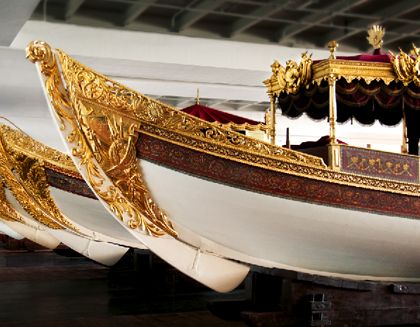
by Gencer Emiroğlu with photographs by Fritz von der Schulenburg
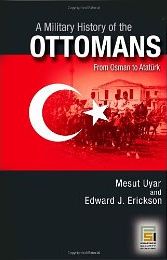
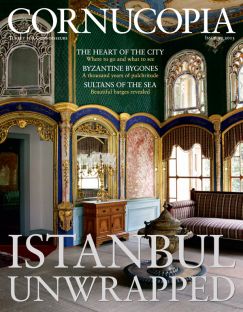
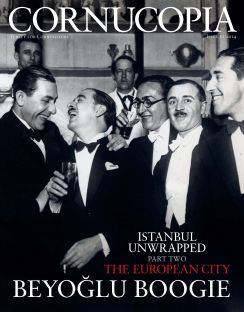
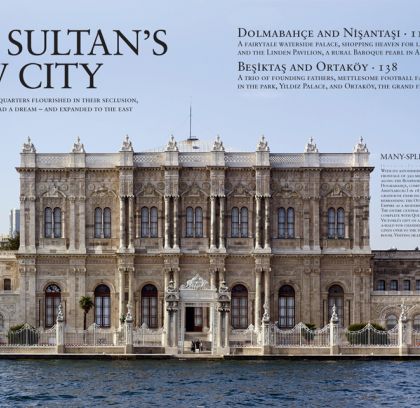
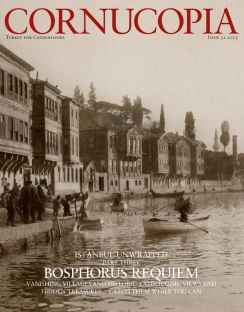
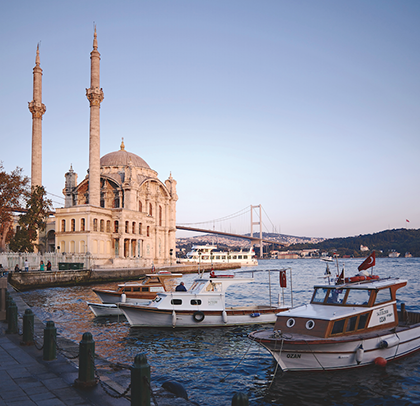
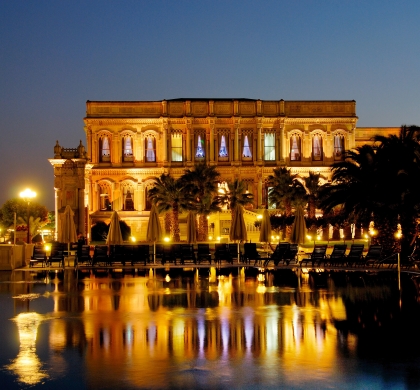
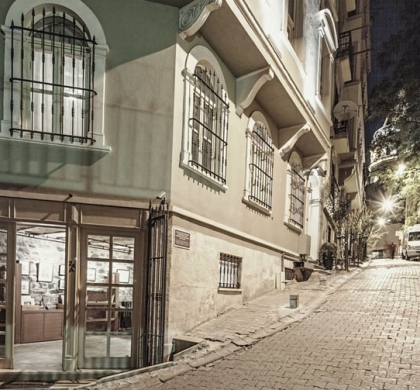
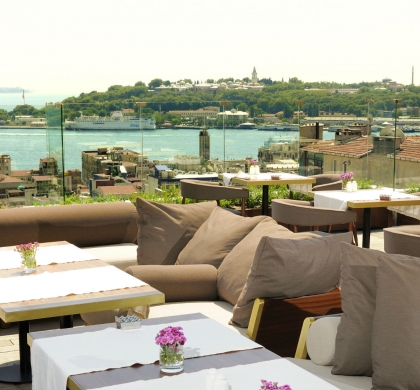


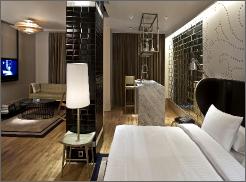
 Issue 66, December 2023
Turkey’s Centenary Issue
Issue 66, December 2023
Turkey’s Centenary Issue

Cornucopia works in partnership with the digital publishing platform Exact Editions to offer individual and institutional subscribers unlimited access to a searchable archive of fascinating back issues and every newly published issue. The digital edition of Cornucopia is available cross-platform on web, iOS and Android and offers a comprehensive search function, allowing the title’s cultural content to be delved into at the touch of a button.
Digital Subscription: £18.99 / $18.99 (1 year)
Subscribe now